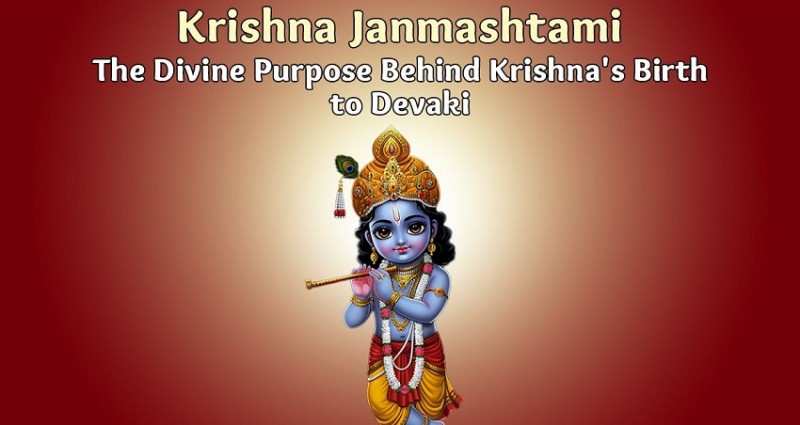
Janmashtami, also known as Krishna Janmashtami or Gokulashtami, is a revered Hindu festival that commemorates the birth of Lord Krishna, a central figure in Hinduism and a symbol of divine love and protection. This sacred event falls on the eighth day of the dark fortnight in the month of Shravana, which corresponds to late July or early August on the Gregorian calendar. This year, Janmashtami is observed on Monday, August 26, 2024.
The Divine Arrival of Lord Krishna
The story of Lord Krishna’s birth is both profound and enchanting, as described in the Shastras. According to these sacred texts, Krishna's birth was a miraculous event, meant to bring an end to the tyranny of the evil king Kansa and to bring joy to His devotees.
The Miraculous Conception: Devaki, Krishna’s mother, was overjoyed yet apprehensive when she conceived Krishna, aware that her brother Kansa sought to kill her children to prevent his downfall. To protect Krishna, the divine energy known as Yogamaya intervened. This divine power caused Krishna’s expansion to be transferred from Devaki’s womb to that of Rohini, another wife of Vasudeva, who was living in Gokula. Thus, Krishna’s elder brother Balarama was born to Rohini, while Krishna was spiritually transported into Devaki's womb, marking His divine birth.
Divine Form at Birth: Krishna’s arrival was not ordinary. Unlike typical human births, Krishna was born in His divine, four-armed form, before assuming the appearance of a human child. His birth transcended the normal processes of labor and pain, embodying a divine essence that defied conventional expectations.
The Purpose of Krishna’s Incarnation
Lord Krishna’s incarnations serve specific purposes as outlined in the Bhagavad Gita. The verses from this scripture emphasize His divine role:
Verse 4.7: “yadā yadā hi dharmasya glānir bhavati bhārata abhyutthānam adharmasya tadātmānaṁ sṛijāmyaham” – This verse signifies that Krishna manifests Himself whenever there is a decline in righteousness (Dharma) and an increase in unrighteousness (Adharma).
Verse 4.8: “paritrāṇāya sādhūnāṁ vināśāya cha duṣhkṛitām dharma-sansthāpanārthāya sambhavāmi yuge yuge” – Here, Krishna states that He appears to protect the righteous, annihilate the wicked, and re-establish Dharma in every age.
The Significance of Krishna's Avatar
Krishna's appearance as an Avatar is a unique phenomenon. While He is not bound by the limitations of time or space, He chooses to incarnate to relieve His devotees from their spiritual anxieties and to showcase His divine leelas (pastimes). Krishna is considered the original source of all Avatars, embodying supreme divinity and power to eradicate evil.
His appearances are designed to impart spiritual wisdom and re-establish divine principles, thus fostering a deeper connection between the divine and humanity. Krishna’s divine presence reassures His followers and continues to inspire devotion and righteousness across the ages.
Celebrating Janmashtami
On Janmashtami, devotees engage in various devotional practices such as fasting, singing hymns, and participating in dramatic reenactments of Krishna’s life. These celebrations are expressions of profound love and devotion towards Lord Krishna, reflecting the festival’s deep spiritual significance.
As we celebrate Janmashtami 2024, let us reflect on the divine teachings of Lord Krishna and embrace the virtues of righteousness, devotion, and divine love that His life exemplifies.